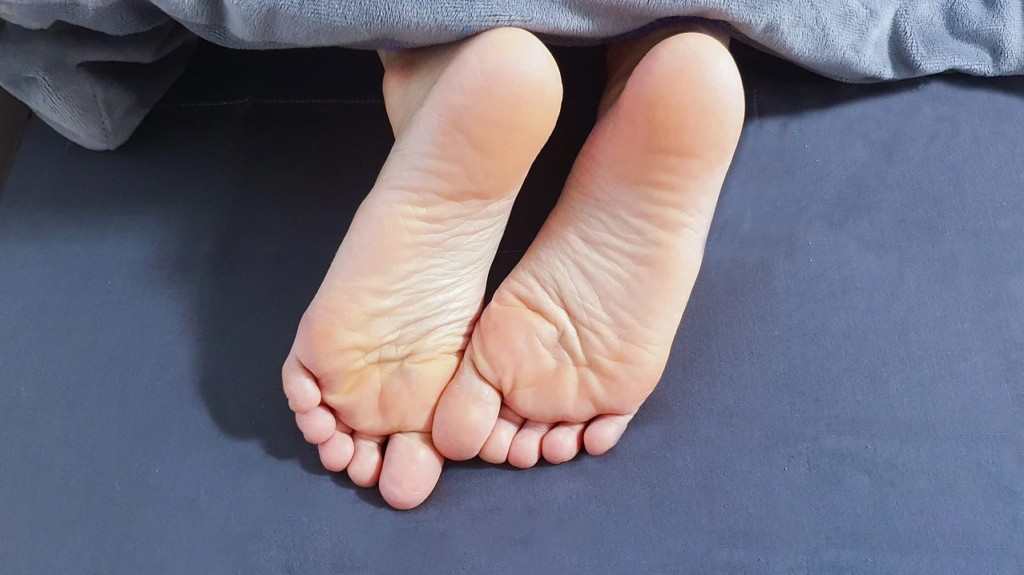Peeling skin on your feet can be a common and sometimes perplexing issue. Almost everyone experiences it at some point, whether it’s due to a simple case of dry skin or an underlying condition. You might notice it after wearing sweaty shoes all day, or perhaps it seems to appear for no apparent reason. It’s a frequent concern that podiatrists address, and while often harmless and manageable with basic foot care, it can sometimes signal a need for more specific treatment. So, if you’re wondering, “Why Is My Foot Skin Peeling?”, let’s delve into the common causes, symptoms, and effective ways to address this issue.
Symptoms of Peeling Skin on Feet
Recognizing the symptoms is the first step in understanding and addressing peeling skin on your feet. The most common signs include dryness, cracking, and visible peeling of the skin, particularly on the soles and around the toes. You might observe:
- Cracked skin: Fissures or breaks in the skin, often around the heels or sides of the feet.
- Peeling skin: Flaking or shedding skin, which can occur in patches on the heels, balls of the feet, or toes.
- Dry, rough skin: The skin on your feet may feel hardened, coarse, and lack moisture.
- Itchiness: Sometimes, peeling skin can be accompanied by itching, especially if it’s related to a fungal infection or eczema.
- Redness: Inflammation or redness might be present, particularly in cases of sunburn, eczema, or psoriasis.
It’s important to note where the peeling is occurring and if it’s associated with any other symptoms to help determine the potential cause.
Common Causes of Peeling Skin on Feet
Peeling skin on the feet can arise from a variety of factors, ranging from environmental conditions to specific skin disorders. Understanding these causes is crucial for effective treatment.
 Bottom of feet
Bottom of feet
Several common culprits behind foot skin peeling include:
- Athlete’s Foot (Tinea Pedis): This is a highly prevalent fungal infection that thrives in moist environments, such as sweaty shoes and socks. Athlete’s foot often affects the skin between the toes and the soles of the feet, leading to itching, burning, and peeling skin. The dampness creates an ideal breeding ground for the fungus.
- Eczema (Atopic Dermatitis): Eczema is a chronic skin condition characterized by itchy, red rashes. It can affect various parts of the body, including the feet, and can cause skin to peel and flake. Eczema often has a genetic component and tends to flare up periodically.
- Sunburn: Just like any other part of your body, your feet can get sunburned if exposed to excessive UV radiation. Sunburn on the feet can result in red, painful skin that eventually peels as it heals. This is especially common if you’ve been walking barefoot in sandals or open shoes.
- Psoriasis: Psoriasis is an autoimmune condition that causes skin cells to multiply too quickly, leading to thick, scaly patches. When psoriasis affects the feet, it can cause significant peeling, cracking, and discomfort. Psoriasis is a chronic condition that requires ongoing management.
- Dry Skin (Genetics and Dehydration): Simple dryness, caused by genetic predisposition or insufficient hydration, can also lead to peeling skin on the feet. When skin lacks moisture, it becomes brittle and more prone to peeling and cracking. Environmental factors like cold weather and low humidity can exacerbate dry skin.
Effective At-Home Treatments for Peeling Skin
Fortunately, many cases of peeling skin on the feet can be effectively managed at home with consistent foot care practices. Here are some helpful at-home treatments:
- Foot File Exfoliation: Using a foot file is a gentle way to remove dead and peeling skin. Soak your feet in warm water for about 20 minutes to soften the skin. Then, using the rough side of a foot file, gently exfoliate the dead skin in a downward motion. Follow up with the smoother side to refine the skin’s surface.
- Daily Moisturizing: Regularly applying a good quality moisturizing lotion is essential for keeping your foot skin hydrated and preventing peeling. Apply lotion liberally after bathing or showering, paying particular attention to dry areas like heels and soles. Look for lotions containing ingredients like urea, lactic acid, or hyaluronic acid for enhanced hydration.
- Antifungal Over-the-Counter Treatments: If you suspect athlete’s foot is the cause of your peeling skin, over-the-counter antifungal creams, sprays, or powders can be effective. These medications help to eliminate the fungal infection and allow the skin to heal. Follow the product instructions carefully and continue treatment for the recommended duration, even if symptoms improve.
- Allow Feet to Breathe: If you have sweaty feet, especially if you exercise frequently or live in a warm climate, it’s crucial to let your feet air out. Remove your socks and shoes as often as possible to allow sweat to evaporate. Moisture trapped in socks and shoes creates a breeding ground for bacteria and fungi, contributing to skin problems. Consider wearing breathable shoes and socks made of natural fibers like cotton or bamboo.
While at-home treatments are often successful, it’s important to recognize when professional help is needed. If your peeling skin persists despite home care, worsens, or is accompanied by pain, signs of infection, or other concerning symptoms, it’s advisable to consult a podiatrist or other healthcare professional for proper diagnosis and treatment. They can determine the underlying cause of your peeling skin and recommend the most appropriate course of action to restore your foot health.